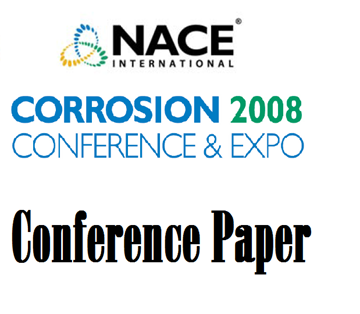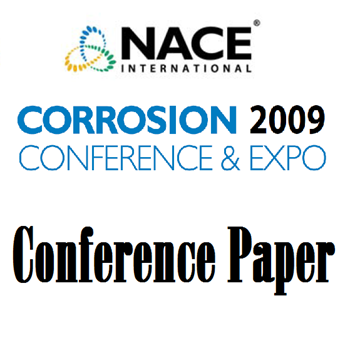Search
Products tagged with 'stress corrosion cracking'
View as
Sort by
Display
per page
02426 THE INFLUENCE OF SOIL CHEMISTRY ON SCC OF PIPELINES AND THE APPLICABILITY OF THE 100 mV POLARIZATION CRITERION
Product Number:
51300-02426-SG
ISBN:
02426 2002 CP
Publication Date:
2002
$20.00
03518 STRESS CORROSION CRACKING OF 304L STAINLESS STEEL IN SODIUM SULFIDE-CONTAINING CAUSTIC SOLUTIONS
Product Number:
51300-03518-SG
ISBN:
03518 2003 CP
Publication Date:
2003
$20.00
06156 OPERATIONAL LIMITS FOR AUSTENITIC STAINLESS STEELS IN H2S-CONTAINING ENVIRONMENTS
Product Number:
51300-06156-SG
ISBN:
06156 2006 CP
$20.00
06497 EFFECT OF WELDING RELATED MICROSTRUCTURE ON STRESS CORROSION CRACKING SUSCEPTIBILITY IN CAUSTIC SOLUTIONS
Product Number:
51300-06497-SG
ISBN:
06497 2006 CP
$20.00
07114 Stress Corrosion Cracking of Nitronic 60 STAB
Product Number:
51300-07114-SG
ISBN:
07114 2007 CP
Publication Date:
2007
$20.00
07206 Corrosion and Stress Corrosion Cracking of Duplex Stainless Steels in Pulping Liquors
Product Number:
51300-07206-SG
ISBN:
07206 2007 CP
Publication Date:
2007
$20.00
07564 FCCU Light Ends Plant Carbonate Stress Corrosion Cracking Experience
Product Number:
51300-07564-SG
ISBN:
07564 2007 CP
Publication Date:
2007
$20.00
07574 SCC of Carbon Steel in Fuel Ethanol Service: Effect of Corrosion Potential and Ethanol Processing Source
Product Number:
51300-07574-SG
ISBN:
07574 2007 CP
Publication Date:
07574
$20.00
08265 Modeling of Carbonate-Bicarbonate Stress Corrosion Cracking of Pipeline Steels
Product Number:
51300-08265-SG
ISBN:
08265 2008 CP
Publication Date:
2008
$20.00
08675 Severity of Stress Corrosion Cracks in Pipelines - Categories and Responses
Product Number:
51300-08675-SG
ISBN:
08675 2008 CP
Publication Date:
2008
$20.00
09338 Heat Treatment Issues on Stainless Steel Heat Exchanger Tubes
Product Number:
51300-09338-SG
ISBN:
09338 2009 CP
Publication Date:
2009
$20.00
09364 Large and Small Scale SCC Testing of 316L Clad at 135 C
Product Number:
51300-09364-SG
ISBN:
09364 2009 CP
Publication Date:
2009
$20.00












